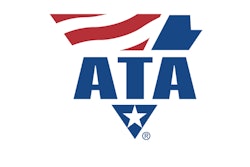
Having problems with managing fleets and employees who drive, but have a primary role that is not driving?
Jonathan Kamanns, fleet program manager for Carolina Tractor & Equipment, recommended to WorkTruckOnline.com five ways to start generating positive momentum:
- Get OUT into the business. Meet decision-makers, managers, and drivers with the only intention being understanding their business: how it operates and why it’s important.
- Ask questions – face-to-face, via remote video, through a survey, or in any way you can – of as many company-vehicle stakeholders as you can. The goal is to gain understanding of what is, and what is not, readily understood about managing employee drivers, and to look for people who have experiences and potential passion for driving fleet success (safety, cost savings, environmental impact, risk avoidance, indirect productivity, customer expectations, service-delivery improvements, marketing and advertising).
- Build out your internal network of people passionate for driving fleet success. Building that network, no matter how many, will ensure the people managing the fleet aren’t the only ones talking about ways to improve caring for and managing driving employees.
- Develop draft guard-rail goals. Share them with your network, managers, drivers and leaders, and take input. Ask about their own goals and draw similarities or opportunities from your guard rail goals to their goals. Refine your goals, including opportunities aligned with your business’ purposes. This is where your organization will begin to see how managing driving employees is different from managing non-driving employees, and appreciate how a focus on employees who have a role that requires driving can be important to the company success.
- Lean on your supplier partners. Even if you’re a lone manager, you’re not alone.








![[VIDEO] How to Perform a Pre-trip Winter Truck Safety Inspection](https://img.forconstructionpros.com/files/base/acbm/fcp/image/2016/09/default.57ebe3087b18a.png?auto=format%2Ccompress&fit=crop&h=167&q=70&w=250)










